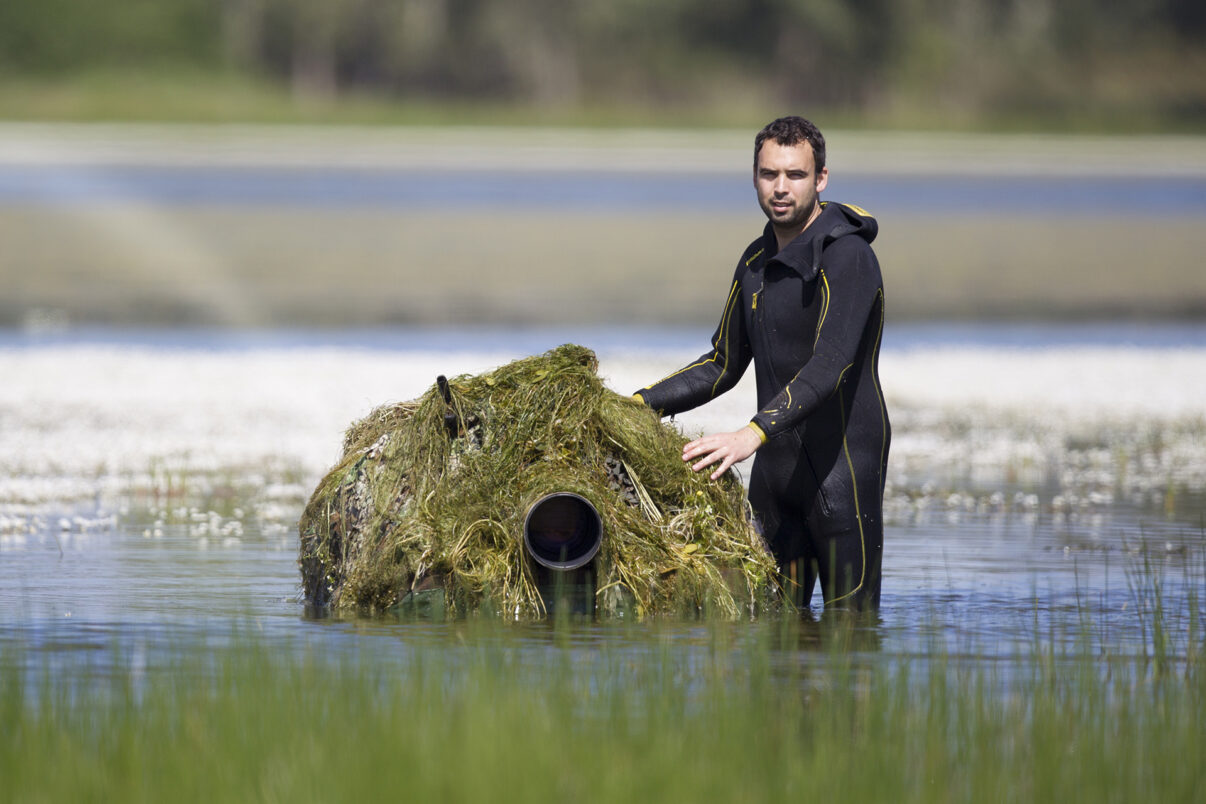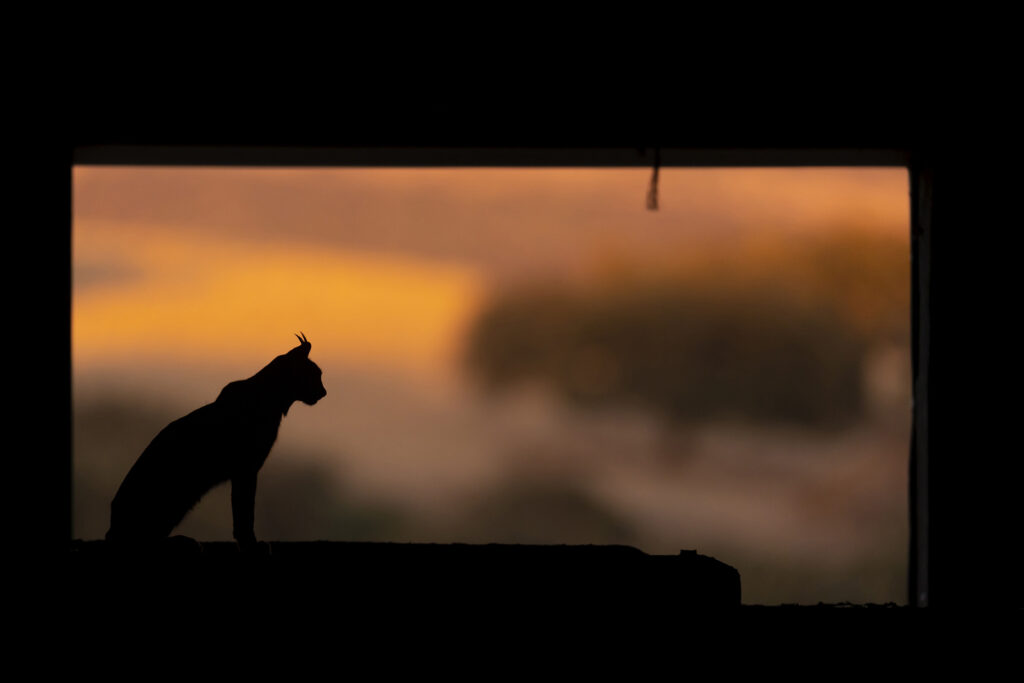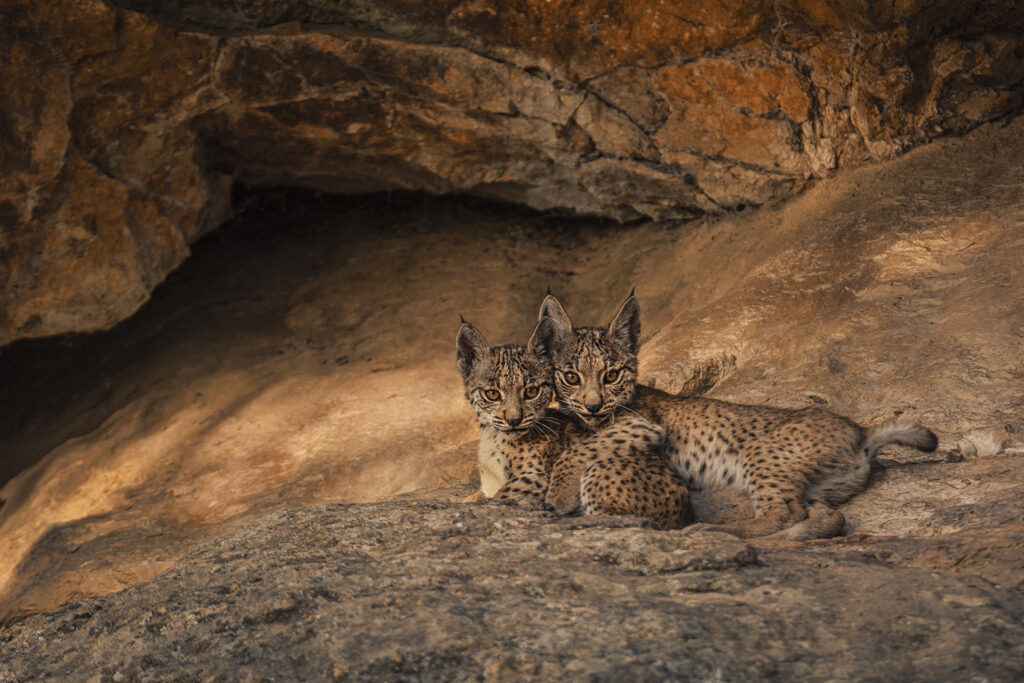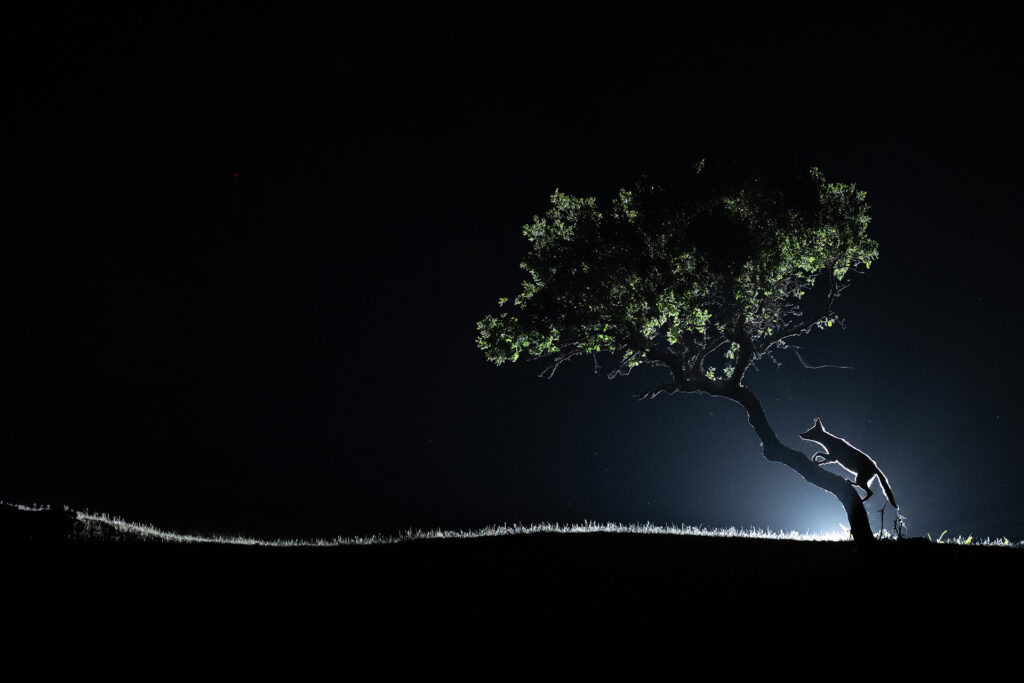At the beginning of November, Portuguese photographer and videographer Ricardo Lourenço won three prizes at the Portuguese Rewilding Photo Contest, which is co-organised by the Rewilding Portugal team. In October, one of his images was also highly commended at the prestigious European Wildlife Photographer of the Year competition. We caught up with Ricardo to find out more about his life, work, and thoughts on rewilding.

The annual Rewilding Photo Contest was first organised by the Rewilding Portugal team in 2021. Through captivating imagery, it aims to celebrate Portuguese nature and promote its conservation and restoration. This year’s contest, which took place on November 4 as part of the Naturcôa Festival in the city of Sabugal, featured four categories – fauna, flora and fungi, natural landscapes, and young photographer. Portuguese photographer and videographer Ricardo Lourenço scooped three prizes – two first places and a second place – worth a total of 650 euros. This complemented a commendation picked up in October for his portrait of an Iberian lynx, submitted as part of the Rewilding Europe Award at this year’s European Wildlife Photographer of the Year competition.
We caught up with Ricardo, who is based in the town of Portalegre in central eastern Portugal – around 200 kilometres south of the Greater Côa Valley rewilding landscape – to find out more about his photographic journey and views on rewilding.
Can you tell us a little about your photography? Is there anything specific that you try to capture in your photos, or messages that you try to tell?
I started as an amateur photographer in 2007, and for the next 10 years I mostly focused on photographing birds. In 2015 I started to photograph other animals whose conservation status I felt needed promotion, such as amphibians and reptiles. I think people tend to be afraid of such animals, and I wanted to change their perception.
Then in 2018 I started photographing foxes near to where I live, and their story became very personal me. This inspired me to use my photos more for storytelling. The whole experience gave me another vision for wildlife photography – not only to capture natural beauty and drama, but to tell important stories and promote important messages. This led me to work with Iberian lynx in the south of Spain, and on the return of the Iberian lynx in Portugal, which I have been focusing on for the last four years. When this work finishes in 2024 I’m aiming to produce a book.

What are your views on rewilding and wildlife comeback?
I find that most people in my country aren’t really aware of the nature on their doorstep – when they think about animals they think of animals from movies or documentaries on Africa or the Amazon, for example, rather than their own continent. I often talk in schools about the amazing wild nature in Portugal. It’s a lot more difficult to protect wildlife that’s far away from us, than wildlife that’s around us. This is why I want to create a connection between young people and Portuguese nature, so that it inspires them to want to protect and enhance it. By supporting wildlife comeback, rewilding is a great platform to engage and inspire people and reconnect them with nature and wildlife species. I believe we need to do this urgently, before we lose the amazing nature around us forever.
What are your views on wildlife photography competitions like the Rewilding Photo Contest and the European Wildlife Photographer of the Year?
One of the main reasons that I enter competitions like this is that many people today think that photographers use Photoshop to change their images, particularly when they focus on animals that are rare and difficult to capture in the wild on film. You can’t do this in competitions like this. The judges and everyone who see the images can see that they are real. So you can say that these competitions validate the work of photographers. I could publish my work on social media, but many people would think they are Photoshopped or enhanced with artificial intelligence, for example.
I’m not hugely concerned about winning when I enter photographic competitions – if I win, it’s nice, but this isn’t my main motivation. Of course, I’m not complaining about the prize money. Photographing wildlife isn’t cheap – you have to buy equipment, pay for accommodation and travel, and so on, so the money is helpful.

Can you tell us a bit more about shooting some of the prize-winning photos?
The photo of the Iberian lynx, which was highly commended in the Rewilding Europe Award at this year’s European Wildlife Photographer of the Year competition, was taken in Extremadura in southern Spain, close to the border with Portugal. It shows a female Iberian lynx, called Quitapeñas, who chose a sheepfold as a place to bring up her kittens. She has spent the last few years in the same way, and is used to people being around, cleaning the sheepfold and moving the sheep in and out, which makes it easier to photograph her. She sometimes spends an hour by the entrance to the sheepfold because pigeons often come at the end of the day to roost inside for the night. So the photo shows the strategic place Quitapeñas has chosen to hunt pigeons, and to teach her kittens how to hunt them too. Iberian lynx mostly feed on wild rabbits, but I guess she has chosen to hunt pigeons too, because they are easily available close to her den.

The photo of the fox in the tree, which won first place in the fauna category of the Rewilding Photo Contest, was taken near the Portuguese town of Campo Maior, pretty close to where I live. There was a colony of bee-eaters living in this tree, and the smell of the birds and the undigested parts of the insects they had eaten was quite strong. There were four foxes living in this area, and this one was the most confident – every night it would climb the tree looking for food, attracted by the smell. I used a flash behind the tree to provide artificial light.

What are your plans for the future?
So I will continue to work with Iberian lynx. Although the Iberian lynx population is recovering, the species still faces many challenges, which need to be highlighted. The growth of the population will lead to greater dispersal of territories and, as a result, greater coexistence issues with people, and problems related to poisoning, being run over by cars, and illegal hunting. In addition, I’m doing some macro photography work with insects, and some photography with vipers. I also have plans to photograph bears in the north of Spain, for National Geographic.
At the moment I work as a teacher of communications and communications technology, but it’s my dream to be a full-time professional photographer, and I think this evolution is happening right now. But I’ve never woken up in the morning and felt like I was suddenly professional. For now I want to mainly focus on finishing my Iberian lynx book, which will not only focus on the animal itself, but also on my experience of the work: the joys, the frustrations, and the way in which I became emotionally involved with the stories of some animals that I was able to follow.